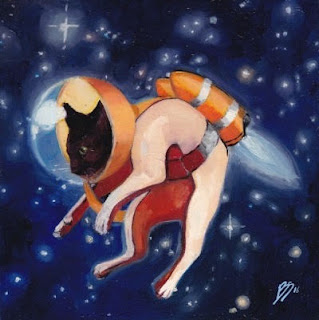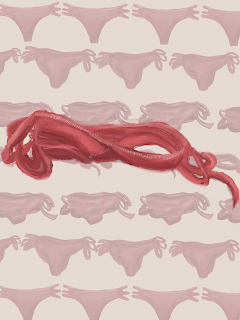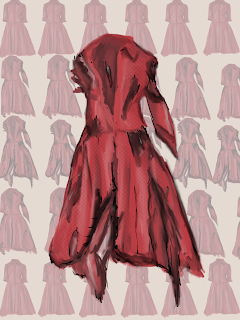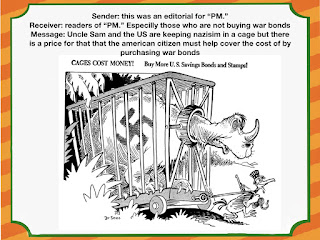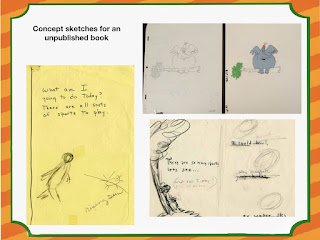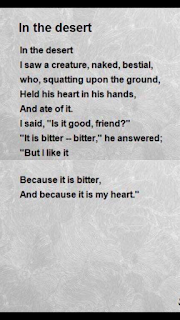Styling and reserch for accuracy
Thins chapter was all about doing accurate reserch to make sure that the thing that you have done is period accurate. As a costume designer, i feel like this is a lot more important than one chapter of a book is able to convey. You can make something, and it can look fantastically great but it fete world is in the past and the parts of the illustration are not all in the same time, the image will not work together and someone will know. Especilly if it has to do with anything military, someone will know if you got it wrong. You must set out to carefully and deliberately reserch adn be sure that your sources are dependable and accurate if you want to create something that is visually strong and conveying the time and place that you want. The author talks about how the internal logic must all fit together and convey what you want.
I take a lot of issue with the authors reserch methods that seem almost lazy at some points. The most glaring example to me was his piece “wail” about the swing dancing hay day. He talks about how he spent a lot of time looking at different suits and ties and chose to mesh them all together which is an excellent way to get the concept across, but when it came to the woman, he says he just compleatly made up what she was wearing. This is problematic because he isin’t Even following his own reserch rules to make an image mesh, but he’s presenting it in a way like he did. As he said before, if you get one thing wrong, someone will know. Because i know a lot about period fashion, I can see that it is incorrect and I think that if he had of taken the time to create an outfit for the woman that was as well thought out and reserched as the mans the piece would have been stronger.
Illustration F18 - Toria
Reading 7-chapter nine
Getting jobs
In this chapter the author talked a lot about how to get a job. He discusses the reason that illustrators are nessisary, to display concepts or events that a camera can not capture, and how to utilize that so you can get employed. In this chapter, the author does not talk about networking, or social media, or how to present your portfolio, he mostly focuses on things that he has done that were effective and odd jobs that he was hired for and how to work for the clients. He talks about finding your nish, the section of illustration that you can do really well so that you can get hired for that. He talks about how you have to be able to communitcate and talk with your clients about the concepts that they want to convey, and work to do what is bet for them, and listen to what they want so you will get rehired.
In this chapter the author also talks about deadlines. He says that the most important part of illlustration is to never miss a deadline. If you do, you will never work for that company or client again. It’s important to meet your deadline or you wont get paid and you wont get hired again. It talked about how there are two different types of deadlines, a deadline, and a drop dead deadline. The second I’d s the final absolute dealing that there is, while a deadline deadline may be more flexible on time if you talk to your client, but they’re still not going to be happy anbout it.
Reading five-chapter 8 stylistic choices
In this chapter the author discussed how illustrators have styles, and how illustration has styles, and how the two can meld together.
Every illustrator and artist has a style, they may not know it yet, or it may be underdeveloped, but it is there. They need ot work and do exercises in illustration to develop what their style is and to really hone in on it. The author notes that it is important to develop your own styles and not just copy someone else’s like anime or manga. A distinct style is what will get you jobs at first.
The way to develop a style is to look at other illustrators and artists that you like and analyze what they do and then combine and try different things from different people until you have your distinct style that is inspired by, but not copying other people. During this experienetation, you should also experiment with the mediums and materials you are using until you find a combination that works well for you.
The author then talks about how each image needs a style, and sometimes that style is different than your own. If you cant do the style that the client wants, then they will hire another illustrator. This means that you must work to be able to illustrate outside of your style when nessisary so that you can get a multitude of jobs. The author suggests doing practice pieces where you illustrate something outside of your comfort zone in a way that you are unfamiliar with to develop new ways to illustrating that you can use when you need to.
Every illustrator and artist has a style, they may not know it yet, or it may be underdeveloped, but it is there. They need ot work and do exercises in illustration to develop what their style is and to really hone in on it. The author notes that it is important to develop your own styles and not just copy someone else’s like anime or manga. A distinct style is what will get you jobs at first.
The way to develop a style is to look at other illustrators and artists that you like and analyze what they do and then combine and try different things from different people until you have your distinct style that is inspired by, but not copying other people. During this experienetation, you should also experiment with the mediums and materials you are using until you find a combination that works well for you.
The author then talks about how each image needs a style, and sometimes that style is different than your own. If you cant do the style that the client wants, then they will hire another illustrator. This means that you must work to be able to illustrate outside of your style when nessisary so that you can get a multitude of jobs. The author suggests doing practice pieces where you illustrate something outside of your comfort zone in a way that you are unfamiliar with to develop new ways to illustrating that you can use when you need to.
Reading 4 - chapter 7
This chapter was about the schematics of illustration that are part of the craft. The topics covered were symmetry, postive and negative space, borders, and cropping. The author discussed how he uses all of these elements to create a good illustration composition.
Symmetry: the symmetry of the illustration can be manipulated to convey different moods. If an image is symmetrical on both lines it will seem calm or ominous, but it will also be static. If an image is asymmetrical it will be in motion because the eye follows through the image.
Borders: the border of an image is sometimes as important as the image itself because it can change the mood of an illustration. The example in the book was the white Christian rap star. The illustration was originally composed without a border, but when the border was added it made it easier to focus on and made the illustration look like its bursting out and too big for the border. This went well with the concecpt, so he went a step further and added a loud agressive red to bring the illustration further out.
Cropping: the last thing that the author talked about in this chapter was the cropping of an image. He discussed how the cropping can mate the composition seem awkward or cramped. This can sometimes work for an image, but it needs to be thought through instead of just done.
The author then spent time talking about the flow of an image and how the previously stated elements will aid or deter from this. The cropping and line quality seemed especially important to the flow of an image. It’s important for illustrators to think about this to ensure that the illustration conveys the message in an interesting and dynamic way.
The last thing that the author talked about was that illustrations that are on the covers of things will usually have text on them. He talked about how important it was to be aware fo the text and where it will go on the page so that you can work around it in your illustration.
One quote that I liked from this chapter was “but only by knowing the rules can you truely know how to subvert them.” I liked it because i fell like i often break rules that i don’t know are even rules, but now that I’m learning, i know how to use the rules to make my illustrations better.
Symmetry: the symmetry of the illustration can be manipulated to convey different moods. If an image is symmetrical on both lines it will seem calm or ominous, but it will also be static. If an image is asymmetrical it will be in motion because the eye follows through the image.
Borders: the border of an image is sometimes as important as the image itself because it can change the mood of an illustration. The example in the book was the white Christian rap star. The illustration was originally composed without a border, but when the border was added it made it easier to focus on and made the illustration look like its bursting out and too big for the border. This went well with the concecpt, so he went a step further and added a loud agressive red to bring the illustration further out.
Cropping: the last thing that the author talked about in this chapter was the cropping of an image. He discussed how the cropping can mate the composition seem awkward or cramped. This can sometimes work for an image, but it needs to be thought through instead of just done.
The author then spent time talking about the flow of an image and how the previously stated elements will aid or deter from this. The cropping and line quality seemed especially important to the flow of an image. It’s important for illustrators to think about this to ensure that the illustration conveys the message in an interesting and dynamic way.
The last thing that the author talked about was that illustrations that are on the covers of things will usually have text on them. He talked about how important it was to be aware fo the text and where it will go on the page so that you can work around it in your illustration.
One quote that I liked from this chapter was “but only by knowing the rules can you truely know how to subvert them.” I liked it because i fell like i often break rules that i don’t know are even rules, but now that I’m learning, i know how to use the rules to make my illustrations better.
Illustration project 3- narrative
Project brief
I will be creating a six page book based on the poem “In The Desert” by Stephan Crane.
The project will be due on Tuesday November 20TH.
Project timeline
Tuesday oct 23- research due
Thursday OCt 25th- Thumbnails due
Tuesday oct 30- 3x5 concepts due
Thursday nov 1st- rough draft due
Tuesday nov 5th- tight line due
Thursday nov 7th- rough colors due
Tuesday nov 9th- tight color due
Tuesday nov 12th- rough final due
Thursday nov 14th final due
Inspiration images
Thumbnails
Final
Subscribe to:
Comments (Atom)


